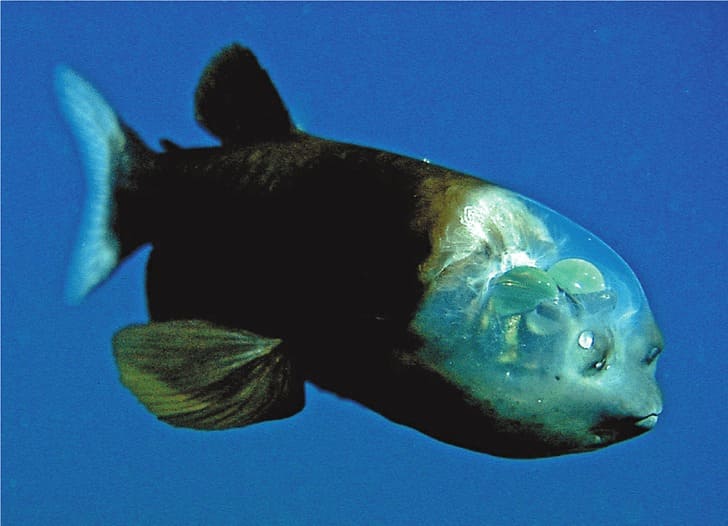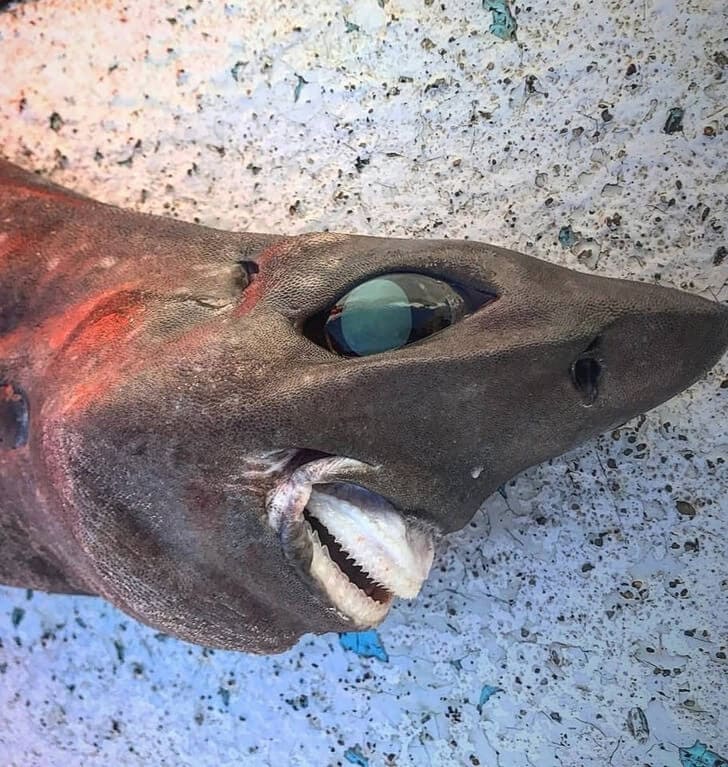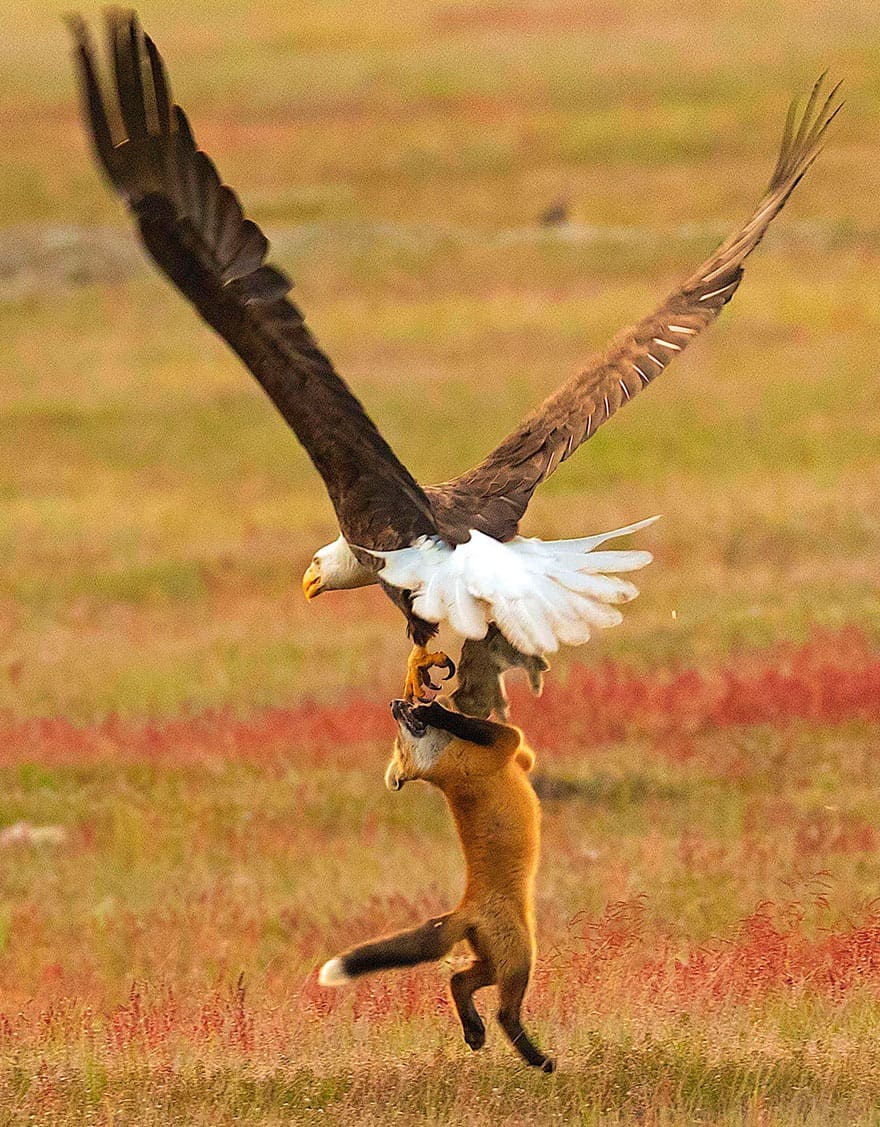ANIMALS
10 Newly Discovered Ocean Creatures That Will Leave You in Awe

“The oldest and strongest emotion of mankind is fear, and the oldest and strongest kind of fear is fear of the unknown”-H.P. Lovecraft
With the oceans covering around 70% of the Earth’s surface, they serve as a natural habitat for countless species. Surprisingly, we have only fully explored a mere 20%, leaving a vast 80% uncharted. This fact alone can be quite unsettling, as it implies the existence of numerous unknown and never-before-seen creatures. Scientists continually uncover new deep-sea species each year, shedding light on the mysteries of the ocean and revealing its increasingly eerie nature. Consequently, every time a new deep-sea creature is discovered, it only reinforces my Thalassophobia—the fear of the ocean. If you’re skeptical, feel free to scroll down, as I’ve curated a list of ten recently found sea creatures that are bound to give you spine-chilling goosebumps. (Consider it my top ten reasons to harbor a dislike for the ocean.)
1. Pineapple fish
 Image source: Richard Ling
Image source: Richard Ling
To kick off our list, let’s begin with something that doesn’t appear straight out of a horror movie. This fish earned its unique name due to its striking coloration. What sets this species apart is its fascinating talent for emitting a green light from its mouth, which gradually turns red as the fish grows older. While it occasionally explores deeper waters, it predominantly resides in the shallow coastal reefs. Once again, Australia serves as the primary home for this remarkable creature.
2. Dumbo octopus
 Image source: NOAA Okeanos Explorer
Image source: NOAA Okeanos Explorer
Take a glance at this octopus‘s prominent ear-like features, and you’ll understand how it earned its name. These fascinating creatures are typically located at depths of up to 13,000 feet, making them a rare sight. Their diet primarily consists of snails, worms, and other small invertebrates that inhabit the same depths. Interestingly, their limbs are relatively compact and equipped with webbing, allowing them to swim with remarkable agility, surpassing the average speed of a typical octopus.
3. A transparent creature
 Image source: Trending and Viral News
Image source: Trending and Viral News
Confusion spread among viewers as a video surfaced online, showcasing an intriguing translucent creature being held by someone. This tiny being possessed complete transparency, allowing light to effortlessly pass through it. The exact species remained a mystery until a similar older video emerged, featuring a person handling a creature known as Cystisoma. These unique organisms reside at depths of 600 to 1,000 meters below the ocean’s surface, thriving in dimly lit environments.
Get ready, because things are about to take a bizarre turn—yes, it’s going to get really, really strange from here on out.
4. Barreleye fish
 Image source: Kim Reisenbichler
Image source: Kim Reisenbichler
Now, let’s move on to something that is undeniably creepy (and don’t fret, we’re not even close to finishing yet). This particular fish possesses a transparent dome on its head, revealing two eerie green orbs within. It’s this distinct feature that sets it apart. These unusual eyes are perfectly suited for its habitat in the ocean’s twilight zone, where natural light begins to fade. In this dim environment, the fish can skillfully detect the silhouettes of its unsuspecting prey, allowing it to launch surprise attacks. Despite its small size, measuring only 15 cm in length, researchers have found that it primarily feeds on zooplankton, as evidenced by the contents of its stomach.
5. Atlantic sturgeon
 Image source: Assateague Island National Seashore
Image source: Assateague Island National Seashore
Belonging to the now-extinct Acipenseridae family, this unique type of sturgeon stands out due to its extraordinary feature: instead of conventional scales, it boasts five rows of sturdy bone plates. These plates serve as protective armor, guarding the creature against potential dangers. Consequently, when this particular sturgeon washed ashore, it managed to evade immediate consumption by a flock of birds, thanks to its resilient defense mechanism.
6. Footballfish
 Image source: KKPCW
Image source: KKPCW
The footballfish first caught scientists’ attention in 1985 when deep-sea fishermen in California accidentally captured one. These fascinating creatures employ an extension on their head, resembling a fishing rod, to attract and capture their prey. It’s worth noting that female footballfish can grow up to ten times larger than their male counterparts. Living at depths of 2,000 to 3,300 feet below the ocean’s surface, where food sources are scarce, this fish has adapted to consume anything that fits in its mouth.
7. Whatever did this to this poor tuna (Warning: trypophobic image)
 Image source: Trapman Bermagui
Image source: Trapman Bermagui
After a skilled fisherman successfully caught this tuna, they made a startling discovery—numerous large bite marks covered the creature’s body. What set these bites apart was their unusually rounded shape, leading many to conclude that they couldn’t have been inflicted by another fish or shark. Trampman Bermagui, the person who caught the tuna, confidently identified the culprit as none other than the Cookie-cutter shark. This particular shark has a peculiar feeding habit of taking massive bites out of its prey without killing them (ouch!). Such sadistic behavior makes it a creature I’d rather never encounter while swimming again.
8. Deep sea shark
 Image source: Trapman Bermagui
Image source: Trapman Bermagui
The eyes of this rough-skinned shark speak volumes, and none of the messages they convey are friendly. Trapman Bermagui, an Australian individual, encountered this menacing creature at a depth of 650 meters (and perhaps should have left it right where it belonged). Although many initially mistook it for a cookie-cutter shark, Trapman clarified that it was, in fact, a different species known as the Endeavor dog shark. He explained that they captured this shark during the winter season.
9. Pacific viperfish
 Image source: David Csepp
Image source: David Csepp
This particular species, commonly referred to as Sloane’s viperfish, can be easily recognized by its elongated, fang-like teeth. Its body is initially adorned with a dark silver-blue hue, accompanied by pigmented patches in a distinctive hexagonal shape along the sides. During the day, this fish resides at depths ranging from 500 to 2,500 meters beneath the ocean’s surface. However, as night falls, it migrates to shallower waters, typically staying within depths of less than 600 meters. Primarily found in Australian waters, this species sustains itself by preying on smaller fish to ensure its survival.
10. Atolla jellyfish
 Image source: Siegel, Volker
Image source: Siegel, Volker
This creature seemed to have emerged straight out of a nightmarish realm, and no one could convince me otherwise. This particular jellyfish, commonly known as a crown jelly, holds a special position within its family, as it appears to wear a miniature crown atop its head. Its distinguishing feature is its vibrant red coloration, which remains hidden in the deep, lightless waters. Remarkably, this jellyfish can camouflage itself from predators at depths exceeding 1,000 meters, appearing entirely black in that environment.
ANIMALS
Amazing Video of Unseen Ocean Creatures in the Ningaloo Canyons

The Schmidt Ocean Institute recently explored the Ningaloo Canyons on the western coast of Australia using a robotic underwater vehicle called the ROV Sebastian. Check out the amazing video of what they discovered in the deep parts of the Indian Ocean.
More info: Youtube




ANIMALS
These Pics Are Art and the Artists Are Insects

Flying insects move so quickly that they are hard to follow, but new technology and some smart ideas have helped Spanish photographer Xavi Bou do just that. After spending 10 years focusing on birds in flight for his Ornithographies project, he turned his attention to insects.
For Entomographies, he uses high-speed video footage taken by Adrian Smith, an insect expert at North Carolina State University, to study and record how insects move. Bou then picks multiple frames and combines them into single images that show the fast movements of one or more insects through space and time.
With Smith’s help, Bou has captured the aerial tricks of wasps, the jumps of leafhoppers, and the fluttering of butterflies in amazing detail. He hopes that by doing this, he can make people more aware of the decline in important insect populations around the world.
1. Zebra longwing
This butterfly, which is common in many areas of the Americas, really fits its name. It can fly very high with just a few flaps of its large wings.
 Image source: nationalgeographic
Image source: nationalgeographic
2. Two-lined spittlebug
This insect, which comes from the eastern United States, is often seen as a pest because it likes to eat grass. Its springy back legs can make it jump into the air like a rocket.
 Image source: nationalgeographic
Image source: nationalgeographic
3. Yellow-collared scape moth
Unlike most moths, this North American species flies during the day. Its shiny blue-black wings sparkle in the sunlight.
 Image source: nationalgeographic
Image source: nationalgeographic
4. Ailanthus webworm moths
These tropical moths have spread farther north in the U.S. Because of their larval host, the invasive tree of heaven, they are now one of the most common backyard moths in the country.
 Image source: nationalgeographic
Image source: nationalgeographic
5. Common stonefly
Mostly found in eastern North America, this insect starts its life as an underwater nymph in forested streams or rivers. Then it leaves the water, sheds its skin, and becomes an adult with wings.
 Image source: nationalgeographic
Image source: nationalgeographic
6. Green lacewings
Eighty-seven species of this insect have been found in the U.S. and Canada. Since they eat a lot of unwanted plant pests like aphids and mites, they are often used to naturally control these pests.
 Image source: nationalgeographic
Image source: nationalgeographic
7. Grapevine beetle
This insect, fittingly named, eats the leaves and fruit of grapevines, both wild and farmed, but it doesn’t do much damage to the plants. As a type of scarab beetle, it often flies in a curved path.
 Image source: nationalgeographic
Image source: nationalgeographic
8. Oak treehopper and green treehopper
Treehoppers are known for their uniquely shaped pronotum, the part behind their head, which often looks like plant parts to hide from predators. They can jump well thanks to special muscles.
 Image source: nationalgeographic
Image source: nationalgeographic
9. Banded orange
This brightly colored butterfly can be found from Mexico to Brazil. Before mating season, male butterflies look for mineral salts, sometimes even drinking salty fluids from the skin, eyes, and nostrils of other animals.
 Image source: nationalgeographic
Image source: nationalgeographic
10. Sapho longwing
Longwings can live for 6 to 7 months, longer than most butterflies. This type, found from Mexico to Ecuador, has shiny blue wings, which is why it’s also called the Sapphire longwing.
 Image source: nationalgeographic
Image source: nationalgeographic
ANIMALS
Eagle and Fox in an Epic Midair Battle Over a Rabbit, Were Captured by a Photographer

Wildlife photography often depends on the perfect combination of good timing and the right place.
That’s exactly what happened when Kevin Ebi, an experienced wildlife photographer, captured an incredible battle between a bald eagle and a red fox, both competing for a rabbit meal.
In a detailed blog post, Ebi shares the fascinating series of events that unfolded while he was photographing foxes in San Juan Island National Historical Park, located in Washington state.
Ebi noticed a lively group of eight fox kits as they began their hunting lessons. Suddenly, they spotted a rabbit, and a thrilling chase ensued. Eventually, one of the foxes emerged as the winner, proudly carrying the rabbit across the field.
 Image source: Kevin Ebi
Image source: Kevin Ebi
Ebi shares what happened at that moment: “As I followed the fox with my camera, a sudden bald eagle cry caught my attention. It was swiftly approaching, clearly aiming for the rabbit. I quickly focused on the fox, anticipating a quick turnover of events.”
To Ebi’s astonishment, instead of a quick surrender, the situation turned into a intense fight in the air.
The eagle used its power to lift the fox and rabbit high up in the sky. Even while airborne, the fox attempted to break free by swinging back and forth.
 Image source: Kevin Ebi
Image source: Kevin Ebi
 Image source: Kevin Ebi
Image source: Kevin Ebi
 Image source: Kevin Ebi
Image source: Kevin Ebi
In the end, the eagle moved the rabbit to its other claw, causing the fox to let go. The intense battle came to an end in less than 10 seconds.
 Image source: Kevin Ebi
Image source: Kevin Ebi
For those worried about the fox’s well-being after the fight, Ebi reassures that it was not injured. The fox swiftly bounced back from the encounter and resumed its playful behavior with the other young foxes, showing no visible wounds from the aerial clash.
 Image source: Kevin Ebi
Image source: Kevin Ebi
 Image source: Kevin Ebi
Image source: Kevin Ebi
 Image source: Kevin Ebi
Image source: Kevin Ebi
 Image source: Kevin Ebi
Image source: Kevin Ebi
-

 GARDEN10 tháng ago
GARDEN10 tháng ago4 Easiest Ways to Get Free Plants
-

 ANIMALS10 tháng ago
ANIMALS10 tháng agoBritish Angler Caught Huge 67-Pound Goldfish in the World
-

 FUNNY10 tháng ago
FUNNY10 tháng ago30 Weirdest Things That People Came Across On The Subway
-

 FUNNY10 tháng ago
FUNNY10 tháng ago30 Funny and Perplexing Photos That Make You Laugh All Day
-

 ANIMALS10 tháng ago
ANIMALS10 tháng agoKindhearted Driver Rescues Skinny Dog Hiding Near Highway Thanks to His Eagle Eye
-

 GARDEN9 tháng ago
GARDEN9 tháng ago30 Shimmering Side Yard Landscape Ideas
-

 FUNNY10 tháng ago
FUNNY10 tháng ago22 Design Fails That Will Make You Laugh Out Loud
-

 ANIMALS10 tháng ago
ANIMALS10 tháng agoMore Than 3 Million People Baffled by Video of Strange Figure on the Beach





